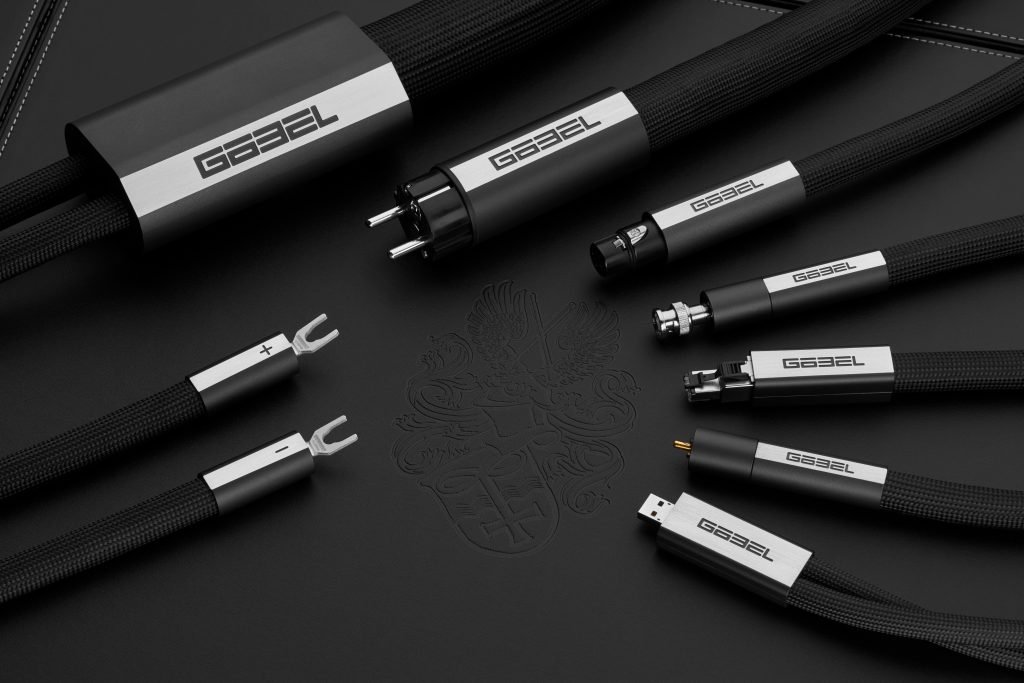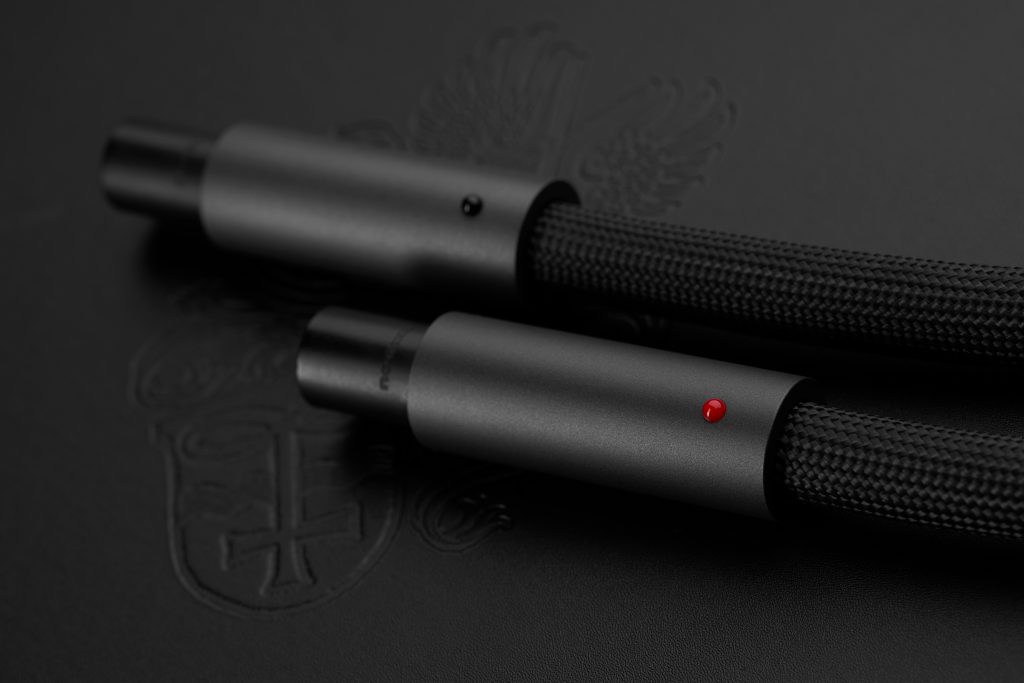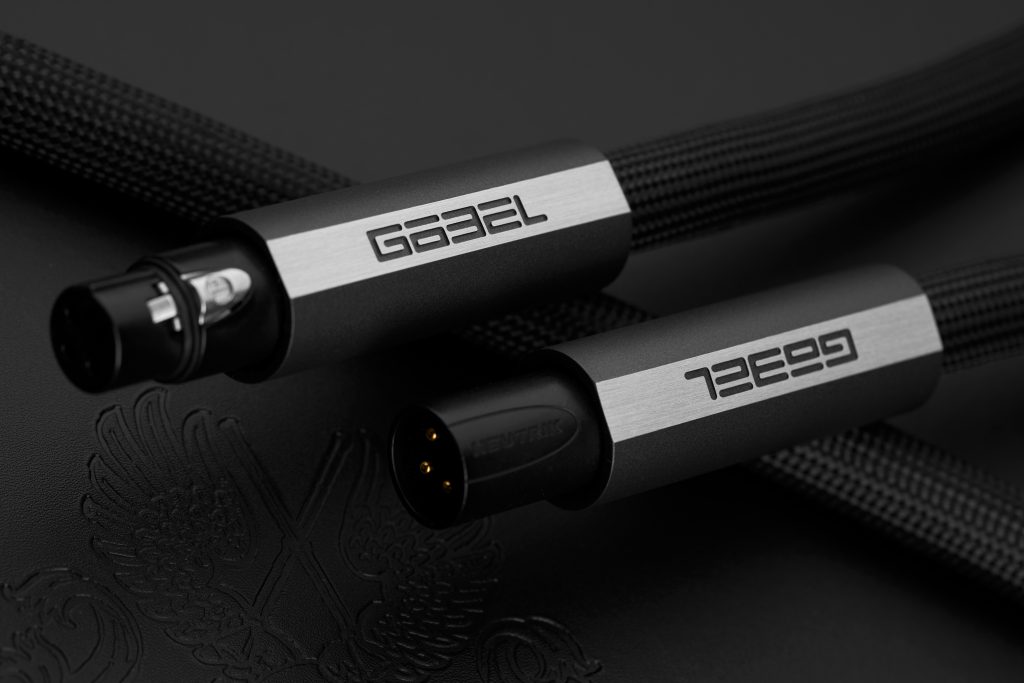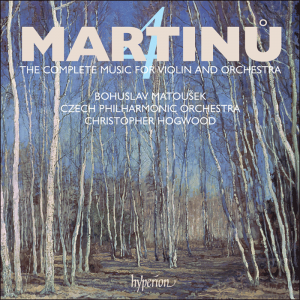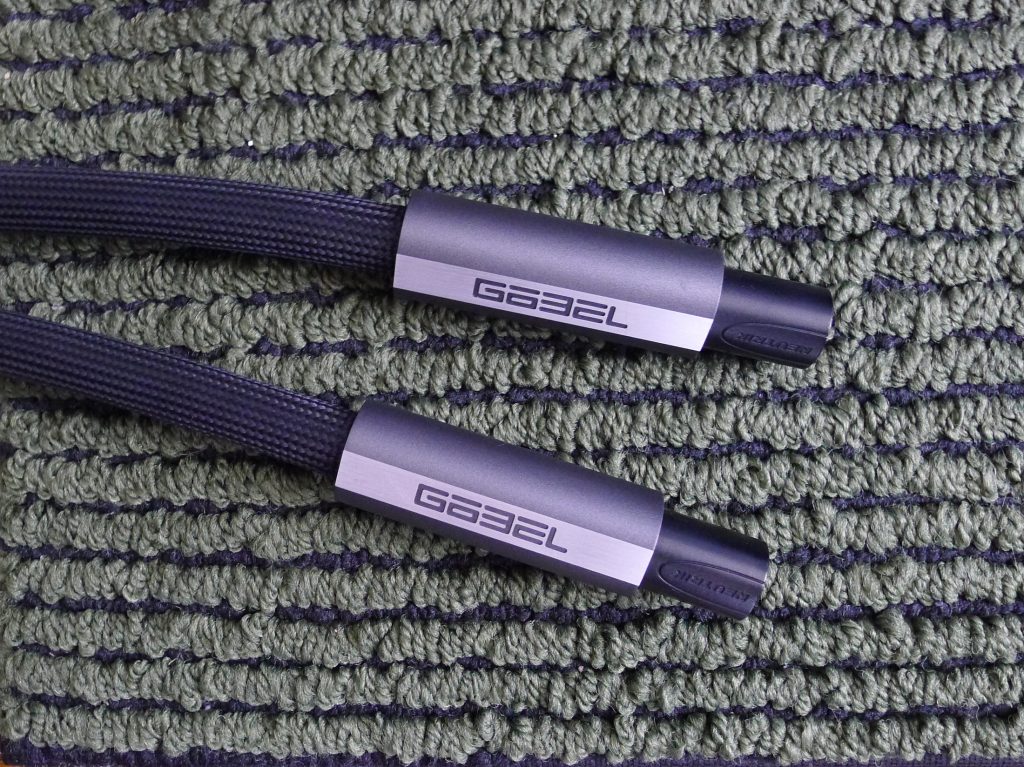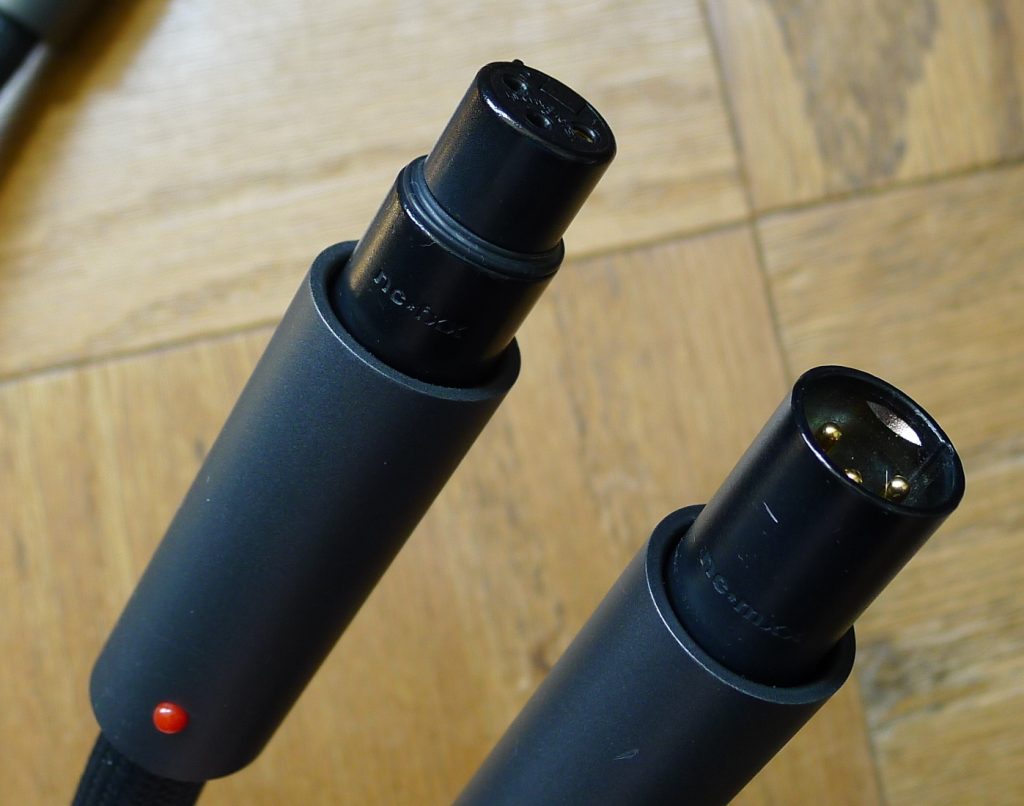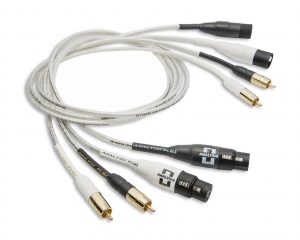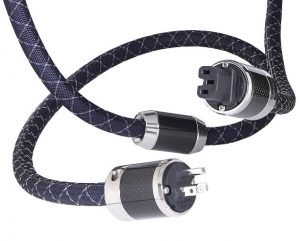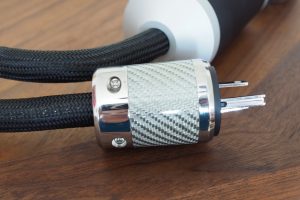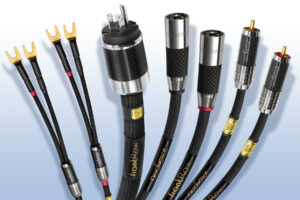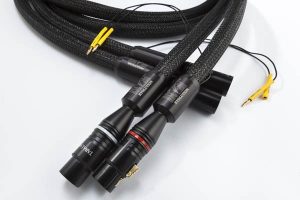I've bailed from the Hi-fi shows. The combination of expense plus the effort to produce a timely report (which could be intense) had become onerous. Of course, I miss the meet and greet, not to mention keeping up on trends and all the new gear. If my local New York show ever got out of the rut it has fallen into—just about everyone I know gives it a pass—I would go.
Instead, I check in with those who do the circuit. So, shortly after this year's Munich show, I gave Ralph Sorrentino, the Brand Ambassador for CH Precision America, a call. CH had five rooms and I noticed they were partnering a lot with the Göbel brand for speakers and cabling. As I knew nothing about Göbel, I asked him to fill in the blanks.
The German firm was incorporated in 2003 by Oliver Göbel, who also serves as designer-in-chief. Distribution in the US was recently granted to Elliot Goldman of Bending Wave USA, in Florida. Ralph affirmed there was good synergy. And, he added as an afterthought, Elliot was looking for some reviews.
Well, I figured, if the cables were good enough for CH, there was a slight chance of their being synergistic in my system. (Ha!) So I asked Ralph to make the introduction.
Introduction
Soon enough Elliot and I were deep in a wide-ranging conversation about all things High End. He brings long-term exposure of many aspects of the business to the table. However, at this particular point in time, he expressed reservations about the state of the industry, claiming there was a ready market of luxury-goods consumers, the clientele for Rolex watches and the like, who were simply being ignored. "We need to do more to bring them in… Oh, and what length interconnects do you need?"
Cosmetics
Two pairs of demo Göbel Lacorde Statement XLR Interconnects arrived some time afterwards. The cable has a black on black color scheme only relieved by the grey engraved nameplate on the cylinder termination, very svelte indeed. It is a little heavy due to those large metal terminations, about average in diameter, and quite flexible so it is easy to work with. Construction is well above average and the cosmetics drew admiring comments from visitors.
Impressions—Round One
Although these were demo cables, I gave them two days on my tuner, always a good thing to do whenever a cable travels to give it some conditioning. The next evening, I put in a length for a quick sound check. It was not encouraging: clean, a little dry, it had no life. And where was that outstanding bass response I read about in all the internet reviews? I recalled one at Mono And Stereo explicitly mentioned very long burn-in times. Maybe that was the issue? So back they went onto the tuner.
Round Two
Two more days passed. Then I popped in a length from preamp à amps, and a second IC from DAC à preamp, pushed play and took a deep breath. "Ah," I exhaled with relief as I relaxed into the music. The Göbel bouquet of attractive qualities engages the listener straight off. But now I was faced with an entirely different problem. Even as it invited me into the comfort zone, my pencil remained still. The Göbel had me tongue-tied. It took many hours to understand and put into words what I was hearing.
An Ingratiating Formula
Let me describe how the Göbel ingratiates itself into your favor. It is very different from the Kubala-Sosna Elation! I had been using. First, I can confirm what I read online: you immediately perceive a robust low-end. This is a bottom-up cable; the sound develops from the bottom and moves upward, with the bass dominant and a commensurate drop in treble energy, which you will have to make adjustments to accommodate. (Unless your system suffers from brightness, in which case it will be cured instantly. Every vestige of this particular malady disappears.) Second, stridency has been virtually eliminated. There's no harshness anywhere. Third, the purity quotient increases. The various artifacts common to audio systems are nowhere to be found. Fourth, instruments exhibit increased density and body. Consider these to be signature traits, which I will refer to as the Göbel bouquet.
Some Music
As I said, the Göbel cables are easy to listen to. Certain CDs that I know to be thin and edgy, like the box set Martinů: Complete Music for Violin & Orchestra (Hyperion 44611), became less so. By the way, if you like Martinů at all, you must give this set a try. The box set of four CDs was reissued last year to much critical acclaim; that's how I discovered it. Christopher Hogwood, a conductor mostly associated with early music (where I find him lackluster), developed an affinity for this music while a student in Prague. Paired with the Czech Philharmonic and violin soloist Bohuslav Matoušek, they seem to own it. The entire box set scores very high for performance, if not as much for sound.
The Soundstage
The Göbel bouquet does wonders to resuscitate the Martinů, plumping up the thin framework with large, dense images of high purity. The well-developed soundstage begins at the plane of the speakers, and recedes in layers, with nothing projecting in front. Depth is good; width is excellent. Image borders are not hard-edged, although they are more sharply drawn than I get from the K-S wires. Black space opens up between the instruments, creating a segregated soundscape; they don't spread out beyond their borders to commingle with their neighbors. The Göbel remains in complete control; there is nothing loose or vague in this presentation. This rendering yields excellent stereo separation and lights up the stage in the manner of a good stereo system. The tradeoff is there's less of a holistic feel. The Göbel bouquet assists in my enjoyment of the Martinů; I can sit through an entire disc fully engaged, without complaining.
Transients
My buddy Sheldon quickly assessed the characteristic shape of the notes. The leading edge comes on fast and dramatically, even as it avoids any form of roughness. The sustain is well represented, then it moves into a decay that lingers around a bit. He pointed out this is unusual: fast transients are usually paired with speedy decays. So, while the Göbel attack can seem aggressive, the lingering decay softens that impression to the point where it can seem almost lush. An unmatched equation—but it works.
Dynamics
I've saved a big one for last—macro dynamics are outstanding. With an extremely wide dynamic range and a tight, powerful low-end of heightened tonal density, you have the formula for cresting wave-fronts with a ton of slam, some of the most powerful I've come across from a cable. These are extroverted wires with lively dynamics that leap and bound in the manner of a young stallion, but they are never reckless; the Göbel always holds the reigns and maintains control over the signal.
Looking at the flip side of the dynamic spectrum, the micro events that reveal inner life, here the Göbel is certainly satisfying, although some of the carefully curated cables in my library exhibit more delicacy and refinement.
Design and Tech Bullets
In many ways the Göbel cables are special. What fabrication elements are employed to achieve these results? I culled this list of bullet points from the website:
Conductor material
We experimented with countless variations of conductor materials. We ended up with our proprietary conductor alloy which contains the ideal electrical conductivity. This special alloy is always the element at the heart of all our Lacorde Statement cables.
Control of Skin Effects
All cables have detrimental "skin effects." The skin effect that harms high frequencies travels near the surface of the conductor; the skin effect impacting middle and low frequencies flow in the center of the conductor. For a time coherent performance, it's fundamental that all frequencies be transported equally.
Additionally, it is important to address signal degradation due to direct contact between the dielectric material and the conductor. Through our special conductor geometry and dielectric materials, we have perfect control over these issues.
Multiple Stranded Webbing Design
The cable's inductance and capacitance must react consistently over the entire frequency range. That is why all of the Lacorde Statement series consist of multiple single isolated conductors of our proprietary alloy. These isolated conductors are arranged in a unique 3D webbing matrix which balances inductance and capacitance, and controls numerous interfering field factors.
Resonance Control
Preventing resonances in all materials and material intersections is very important and is the reason why we mill our own connector housings and strain reliefs out of a certain aluminum alloy and equip them and the cables themselves with specific resonance control devices. All of these efforts are done to get a controlled, broadband resonance pattern which decays quickly and evenly over the entire frequency range. This will be noticed in an ultra-black and silent background, with a perfectly arranged soundstage. The localization of all musical details in the room gets sharper and more natural.
Dielectric
Pressed Teflon.
Connectors
Modified Neutrik XLR plugs were chosen for the best possible contact pressure and lowest possible transition resistance, plus long-term stability.
Conclusion
Musical taste is not as arbitrary as it might seem. Over the years, I've noticed a direct correlation between what I'm enjoying and what's on the floor of the music room. For example, if I'm using small speakers I tend to spend more time digging jazz piano trios and classical string quartets. Small speakers are excellent for these forces. But when it comes to a symphony orchestra, that's another story. Ninety musicians activate a lot of air. A monitor or small floor standing speaker with an 8" woofer simply can't pressurize the room sufficiently to do it justice. That's like telling a farmer to plow his field with a motorcycle.
You need a tool matched to the task. Large forces mandate large speaker systems. (Conversely, large speakers often have issues rendering a string quartet.) What this means is the system you assemble weighs heavily on the type of music you will enjoy. (Alternately, you can make the case that your taste in music informs heavily the components you select.)
This notion can be downscaled and applied everywhere, including the cables. With the Göbel Lacorde Statement XLR Interconnects, I had a distinct bias to challenge my system with demo-quality SACDs of large symphonic works. Oh, they can do small-scale, intimate stuff—it's just that they do the heavy lifting even better.
These are extroverted wires that quickly ingratiate themselves (given enough burn-in time). Their bouquet of audio virtues includes a precision soundstage that is easily parseable, populated with images of heightened density and purity. Macro dynamics and slam are outstanding. The Göbel bouquet had the important side benefit of fleshing out marginal source material, making them easier to listen to.
They sound beautiful. The Göbel Lacorde Statement XLR Interconnects do just about everything excellently and I was really hard pressed to find any area of weakness. They had an especially strong synergy with my CH Precision reference system.
Lacorde Statement XLR Interconnects
Retail: $7000/1.2 m pair
Göbel Audio GmbH
Importer information
Bending Wave USA




